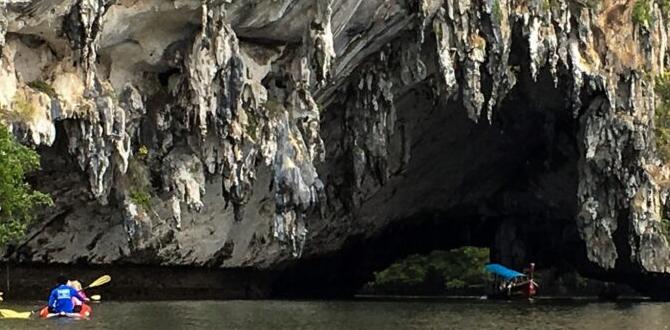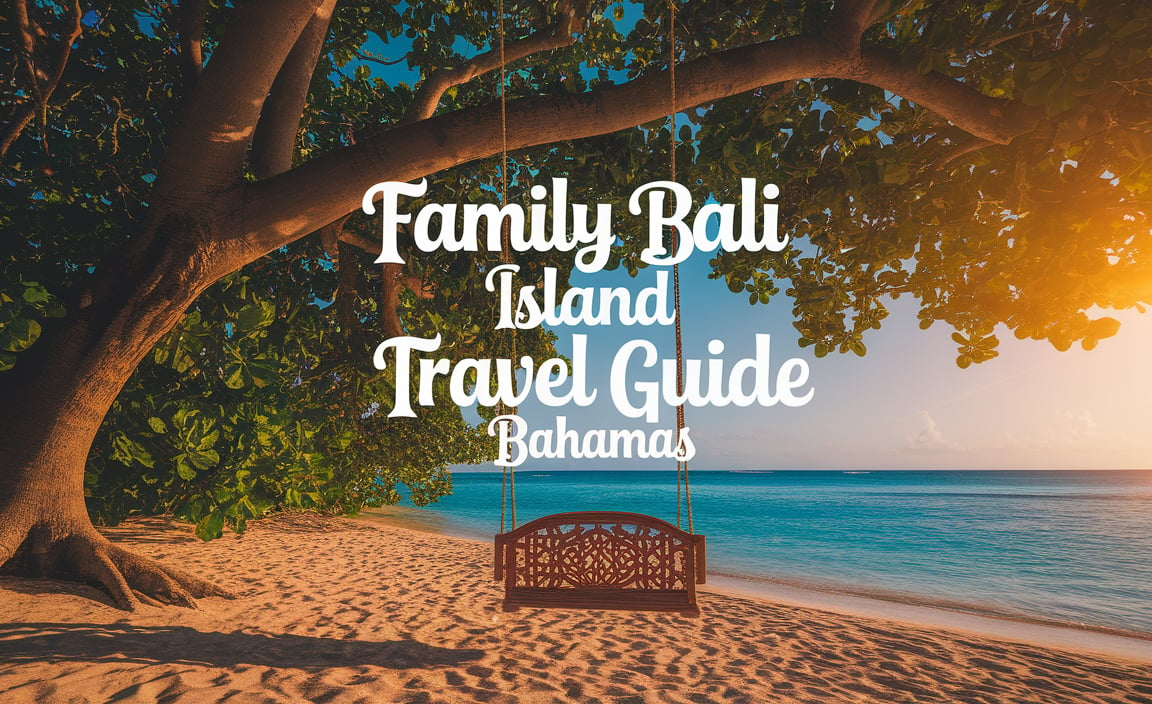Traveling in Bogota with accessibility needs is easier than you think! This guide provides essential tips on transportation, attractions, and accommodations to ensure a comfortable and enjoyable visit. We focus on practical solutions for a stress-free experience, making Bogota a vibrant destination for all travelers.
Welcome to Journey Essentials! Planning a trip to a new city can feel like a puzzle, especially when you have specific needs to consider. Bogota, with its stunning landscapes and rich culture, is a fantastic destination, but navigating it can sometimes present challenges for travelers with accessibility requirements.
Don’t let that hold you back! We’re here to break down how to explore this incredible South American capital with confidence and ease. This guide is packed with practical advice, from getting around to where to stay, ensuring your journey is as smooth and enjoyable as possible. Get ready to discover the wonders of Bogota, tailor-made for your comfort and convenience!
Getting Around Bogota with Ease
Navigating a bustling city like Bogota can feel daunting, but with the right information, you can move around confidently. Understanding the local public transport options and accessible taxi services is key to a smooth travel experience.
Public Transportation
Bogota’s public transport system is extensive, but understanding its nuances is important for accessible travel.
- TransMilenio: This Bus Rapid Transit (BRT) system is Bogota’s main public transport backbone. Many TransMilenio stations are designed with accessible ramps and elevators. However, not all older stations are fully equipped, and accessibility can vary. It’s advisable to check specific station accessibility beforehand if possible. The buses themselves also often have designated priority seating areas.
- SITP (Sistema Integrado de Transporte Público): This is the integrated public transport system, which includes regular buses and the TransMilenio. Some SITP buses are equipped with ramps for easier boarding. Look for indicators on the bus that signify accessibility features.
- Accessibility Challenges: Expect crowded conditions, especially during peak hours. Sidewalks in Bogota can be uneven, and some areas may lack curb cuts. Always be aware of your surroundings.
Accessible Taxis and Ride-Sharing
Taxis and ride-sharing services can offer a more personalized and comfortable way to travel.
- Standard Taxis: While not all standard taxis are accessible, drivers are generally helpful. You can request assistance with boarding. It’s always good to have your hotel or local contact information handy to communicate your needs.
- App-Based Services: Ride-sharing apps like Uber and Didi are widely used in Bogota. While dedicated accessible vehicle options might be limited, you can often request a larger vehicle or communicate with your driver through the app about any specific needs before they arrive.
- Pre-booking Services: For predictable needs, consider booking a taxi service in advance that specializes in accessible transport. Your hotel concierge can often assist with this.
Walking and Wheelchair Use
Exploring Bogota on foot, or by wheelchair, requires some preparation due to varying terrain.
- Sidewalks: Be prepared for uneven sidewalks and occasional lack of curb cuts. Some newer developments and main tourist areas have better infrastructure.
- Hills and Inclines: Bogota is situated in a hilly region, and some neighborhoods have steep inclines. Plan your routes to minimize challenging terrain.
- Pacing: Allow extra time for getting around. Moving at a comfortable pace will make your explorations more enjoyable and less stressful.
Accessible Attractions in Bogota
Bogota boasts a wealth of cultural and natural attractions. Many key sites are making strides in accessibility, ensuring a wonderful experience for all visitors.
Museums and Cultural Sites
Bogota is home to world-class museums, many of which prioritize visitor access.
- Museo del Oro (Gold Museum): Widely considered one of the most important museums in South America, the Gold Museum is remarkably accessible. It features ramps and elevators to access all floors, allowing visitors to fully appreciate its incredible collection of pre-Hispanic gold artifacts. The museum staff are generally accommodating and can provide assistance.
- Museo Botero: Located in La Candelaria, this popular museum showcasing the works of Fernando Botero is generally accessible. While some areas might have minor level changes, the main galleries are navigable with a wheelchair. Its central location in a historic district makes it an essential visit.
- Casa de Moneda (Coin Museum): Often visited in conjunction with Museo Botero, the Casa de Moneda also offers good accessibility to its exhibits, focusing on the history of currency in Colombia.
- Biblioteca Luis Ángel Arango: This prominent library often hosts exhibitions and cultural events. Its modern structure includes accessible pathways and elevators connecting its various sections.
Historical Neighborhoods
While charming, historic areas can present accessibility challenges.
- La Candelaria: Bogota’s historic heart is characterized by cobblestone streets and colonial architecture. While beautiful to behold, these streets can be uneven and steep. Exploring La Candelaria is best done at a relaxed pace, perhaps focusing on main squares and accessible museums within the district. Advise to check specific building access beforehand.
- Plaza de Bolívar: The main administrative square is relatively flat and paved, making it accessible for strolling and taking in the surrounding impressive buildings like the Primada Cathedral, the Palace of Justice, and the National Capitol.
Parks and Nature
Bogota offers green spaces for relaxation and enjoyment.
- Parque Simón Bolívar: This is Bogota’s largest urban park and offers a variety of accessible paths for walking or wheelchair use. It’s a great place to experience local life and enjoy the outdoors.
- Monserrate (Partial Accessibility): While the summit of Monserrate offers breathtaking views of Bogota, accessibility to the very top can be challenging. The funicular and cable car provide access up the mountain, and there are viewing platforms and restaurants accessible once you reach the top station. However, navigating the church and surrounding areas at the summit may have some limitations depending on your specific needs. It’s worth checking current conditions and accessibility features before your visit. You can find more details on their official website or through local tourism offices.
Other Notable Accessible Sites
Consider these other locations that tend to offer better accessibility.
- Andrés Carne de Res (Chia location): While primarily known for its vibrant dining and party atmosphere, the original Chia location is a sprawling complex. They have made efforts to improve accessibility in certain areas, but it’s best to contact them directly to discuss specific needs for navigating different sections of the venue.
- Local Markets: Markets like Paloquemao offer a sensory experience. While the main pathways can be bustling, some sections might be more navigable. Be prepared for crowds and uneven ground.
Accommodation Options for Every Traveler
Finding the right place to stay is crucial for a comfortable trip. Bogota offers a range of hotels and guesthouses, with some actively catering to accessible travel needs.
Hotels with Accessible Features
Many modern hotels in Bogota are built with accessibility in mind, or have undergone renovations to improve it.
- Modern Hotels: Larger, international chain hotels, particularly in business districts like El Dorado or financial areas, often have accessible rooms. These rooms typically include wider doorways, roll-in showers, grab bars, and accessible bed heights.
- Boutique Hotels: While more boutique options may have fewer dedicated accessible rooms, some have made efforts. It’s essential to call ahead and speak directly with the hotel’s management about your specific requirements.
- Key Features to Look For: When booking, look for hotels that explicitly mention accessible rooms, elevators, ramp access to the lobby, and staff trained to assist guests with disabilities.
Booking Tips for Accessible Rooms
To ensure you get the accommodation that best suits your needs, follow these tips:
Confirm Directly: While booking websites might list accessibility features, it’s always best to call the hotel directly. This allows you to have a conversation about your specific needs and confirm that the accessible room meets them. Ask detailed questions about bathroom configurations, bed height, and any potential obstacles.
Request Specifics: If you require a roll-in shower, specific types of grab bars, or a certain bed height, make sure to request it when booking. The more details you provide, the better the hotel can prepare.
Location Matters: Consider the hotel’s location in relation to the attractions you plan to visit and its proximity to accessible transportation options. A hotel in a well-connected neighborhood can significantly simplify your daily movements.
Essential Travel Comforts for All
Ensuring comfort throughout your journey is paramount, and that includes personal care needs. For individuals who require them, planning for discreet and comfortable personal care items is key to stress-free travel.
- Personal Care Items: For travelers who may need absorbent products, such as adult diapers or child diapers for younger family members, there are many discreet and comfortable options available. Brands offer products designed for long flights, active wear, and overnight use, providing security and peace of mind. It’s often easier and more cost-effective to purchase these items in your home country before your trip to ensure you have the specific brands and types you prefer.
- Packing Tips: When packing, consider discreet travel bags or pouches for personal care items. Many modern adult diapers are designed to be slim and quiet, offering excellent protection without bulk. For parents traveling with children, having a readily available supply of child diapers and associated sanitary items in a convenient diaper bag is essential for quick changes on the go, whether on a plane or in a taxi traversing Bogota’s streets.
- Discreet and Reliable Solutions: The goal is to feel confident and undisturbed. Opt for products that offer high absorbency and a comfortable fit, allowing you to focus on enjoying your Bogota adventure rather than worrying about leaks or discomfort. Brands like [Example Brand Name, if applicable, otherwise omit] offer a variety of options tailored to different needs and lifestyles.
Essential Tips for a Smooth Trip
Beyond getting around and where to stay, a few extra tips can make your Bogota accessible travel experience even better.
Planning Your Itinerary
Strategic planning is your best friend when traveling with accessibility needs.
- Prioritize: Decide which attractions are most important to you and research their accessibility thoroughly.
- Build in Flexibility: Unexpected challenges can arise. Having flexible timings and backup activities will reduce stress.
- Pace Yourself: Don’t try to cram too much into one day. Bogota is a large city, and exploring at a relaxed pace will be more enjoyable.
- Research Opening Hours: Always check the current opening hours and days for attractions, as these can change.
Communication and Support
Effective communication can bridge many gaps.
- Learn Basic Spanish Phrases: Knowing a few key phrases can go a long way. Simple requests for help or directions can be easily understood. For example, “¿Hay una rampa?” (Is there a ramp?) or “¿Puedo obtener ayuda?” (Can I get help?).
- Use Translation Apps: Google Translate and similar apps can be invaluable for real-time communication.
- Hotel Concierge: Your hotel staff can be an excellent resource for information on accessible routes, taxi services, and local recommendations.
- Contacting Attractions: If possible, reach out to attractions in advance to inquire about their specific accessibility features and any services they might offer. The Colombian Ministry of Culture website is a good starting point for official information on cultural sites in Colombia.
Safety and Health Considerations
Staying safe and healthy ensures a worry-free trip.
- Altitude: Bogota is at a high altitude (around 2,640 meters or 8,661 feet). Take it easy on your first day, stay hydrated, and avoid strenuous activity. Consult your doctor about altitude sickness precautions if you are concerned. The CDC provides excellent guidance on altitude acclimatization.
- Weather: Bogota has a temperate climate, but it can be unpredictable. Pack layers, including a waterproof jacket, as rain is common.
- Medications: If you have any medical conditions, ensure you pack more than enough of your medications, along with copies of your prescriptions. Keep them in your carry-on luggage.
- Emergency Services: Know the local emergency number (123 for general emergencies).
Packing Essentials for Accessibility
Consider these items to make your journey smoother.
- Comfortable Footwear: Essential for exploring, even if you’re using a wheelchair.
- Compact Rain Gear: A lightweight, packable umbrella or waterproof jacket.
- Portable Charger: Crucial for keeping your communication devices powered.
- Any personal mobility aids: Ensure they are in good working order before you depart.
- Copies of important documents: Keep digital and physical copies of your passport, visa (if applicable), and any medical information.
Making the Most of Your Accessible Bogota Experience
Bogota is a city of vibrant contrasts, from its colorful street art to its significant historical landmarks. By taking a proactive approach to planning and utilizing the resources available, you can ensure your visit is rich, rewarding, and completely comfortable.
Sample Accessible Itinerary (3 Days)
Here’s a hypothetical itinerary designed with accessibility in mind. Remember to adjust based on your pace and interests.
Day 1: Historic Heart and Artistic Delights
- Morning: Arrive at El Dorado International Airport (BOG). Ensure you have pre-arranged accessible transportation or use a reliable taxi service to your hotel.
- Lunch: Enjoy lunch at a restaurant near your hotel, perhaps in a more modern district with better sidewalk access.
- Afternoon: Visit the Museo del Oro. Its excellent accessibility allows for an unhurried exploration of its vast gold collection.
- Late Afternoon: Take a guided tour of Plaza de Bolívar. The square itself is accessible, allowing you to admire the surrounding architectural marvels.
- Evening: Dinner in a restaurant in the Chapinero district, known for its diverse culinary scene and generally good infrastructure.
Day 2: Culture, Views, and Local Flavors
- Morning: Explore the Museo Botero and Casa de Moneda in La Candelaria. Focus on the main accessible galleries.
- Lunch: Find a cafe in La Candelaria that offers flat access.
- Afternoon: Consider a visit to Monserrate. Take the funicular or cable car and explore the accessible areas at the summit. The views are spectacular.
- Evening: Experience the lively atmosphere of a restaurant in the Usaquén neighborhood, which has a charming Sunday flea market and many dining options.
Day 3: Green Spaces and Departure
- Morning: Enjoy a leisurely visit to Parque Simón Bolívar, Bogota’s largest urban park. Explore its pathways and enjoy the open space.
- Lunch: Have a final Colombian meal at a restaurant conveniently located for your airport transfer.
- Afternoon: Depart from El Dorado International Airport (BOG).
A Note on Accessibility Evolution
It’s important to recognize that accessibility is a developing area in many cities, including Bogota. While progress is continually being made, challenges can still exist. The key is to stay informed, be prepared, and communicate your needs effectively. Many Colombians are friendly and eager to help, and with a little planning, your journey can be incredibly fulfilling.
Frequently Asked Questions
Q1: Is Bogota wheelchair-friendly?
Bogota has made strides in accessibility, especially in newer areas and major attractions like the Gold Museum and Botero Museum. However, older neighborhoods like La Candelaria have cobblestone streets and hills which can be challenging. Public transport like TransMilenio has accessible stations, but not all are perfectly equipped. It’s best to mix accessible transport options with careful planning for areas with uneven terrain.






